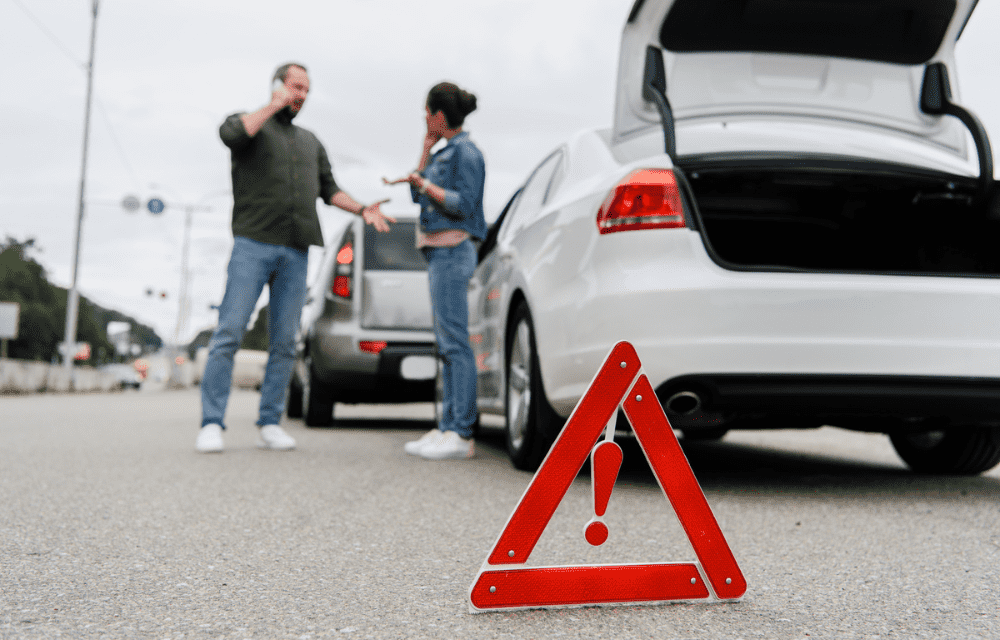
Cutting Costs with a Collision Deductible Waiver
TABLE OF CONTENTS
Actor Kevin Bacon said that fame is a double-edged sword. That may be true. But most of us have more down-to-earth problems to deal with, like insurance claims. And if there ever was a blade that cuts two ways, it’s the deductible. Way back when you were buying insurance, you may have opted for a higher deductible. It kept your rates as low as possible. But when something bad happens, that higher deductible cuts deep. Especially when the damage wasn’t your fault.
In short, a collision deductible waiver can help with this. The good news is, you may not have to get caught off-guard by a high deductible on your car insurance. There are strategies to lock in lower premiums and minimize your deductible at the same time. One option, depending on where you live, might be a collision deductible waiver.
KEY TAKEAWAYS
- 1
A collision deductible waiver covers the deductible on collision insurance, which pays for damages to your car resulting from an accident.
- 2
Collision deductible waivers are currently only available in California and Massachusetts, but some insurers in other states may offer similar policies.
- 3
A collision deductible waiver can help you avoid paying out of pocket for car repairs after an accident that was not your fault.
What collision insurance covers
As you might guess, collision deductible waivers only apply to the deductible on collision coverage. This pays for damages to your car resulting from an accident. That accident could involve another car or even an object, like a tree or mailbox. Or the accident could result from you swerving in order to avoid something in the street.
Say you’re driving on a two-lane road at night. A deer then runs in front of you. You subsequently pull the steering wheel right, lose control, and end up in a ditch roadside. The resulting damage to your car would be a collision claim. Interestingly though, if you hit the deer, it would likely count as a comprehensive claim instead.
Collision coverage can also cover damage to your car caused by someone else. Normally, the at-fault driver’s liability coverage pays for repairs to cars damaged in an accident. But sometimes that at-fault driver has no insurance or doesn’t cooperate. In that case, you can file a collision claim with your insurer to get your car fixed.
When is collision insurance required?
You aren’t required by law to have collision coverage, the way you must carry liability insurance. But if you’ve financed the car, your lender will demand that you have collision coverage.
Collision deductible waiver definition
Collision insurance nearly always has a deductible. $500 is a common choice. Some insurers offer $0 collision deductibles, but the premiums are so high that it’s not really an option for most.
A collision deductible waiver eliminates out-of-pocket expenses when not at fault for the accident. This is an important point. No insurer will give you a break on the deductible when you caused the damage. The purpose of the deductible waiver is to protect you from having to pay when the damage is someone else’s fault.
Typically, if another driver is at fault, the expense should be covered by the other driver’s liability insurance. Your insurer should first go after the at-fault driver to cover the repair costs. If successful and the insurer recoups some cash, you may then be refunded some or all of your deductible. Unfortunately, that process takes time and the outcome is uncertain. When you have a deductible waiver in place, you can get your car fixed without paying upfront and then waiting to get reimbursed.
Where can I get a collision deductible waiver?
Only two states, California and Massachusetts, offer a state-defined collision deductible waiver. Insurers in other states may offer waivers, but the specifics are defined by the insurer rather than the state. Let’s review how these waivers work in California and Massachusetts. Then we’ll dive into your options in the other states.
Collision deductible waiver in California
A California Deductible Waiver, or CDW, specifically eliminates deductibles when your insured car is damaged by an uninsured motorist or you are the victim of a hit-and-run. You pay for this option, but the cost is low. It should be less than $50 for your policy term.
You could, however, achieve similar protection in California by purchasing no-deductible uninsured motorist coverage. This also protects you in a hit-and-run. Uninsured motorist protection is broader but more expensive than the California Deductible Waiver.
Collision deductible waiver in Massachusetts
In Massachusetts, the waiver eliminates your out-of-pocket expense when struck by another driver who has been identified. The incident might involve you getting rear-ended. Or it may be from being hit by a driver who’s later convicted of driving under the influence. Basically, if you’re less than 50% at fault for the accident and the other driver has been identified, the waiver kicks in.
Your car repairs shouldn’t cost you anything.
Because of the stipulation that the at-fault driver must be identified, you’ll still have to pay the deductible if you are the victim of a hit-and-run. But you won’t if the driver is known, regardless of whether that driver has insurance or not.
Uninsured motorist coverage and collision deductible waivers
As noted, the protections offered by uninsured motorist coverage overlap with what you’d get from a deductible waiver. Thus, it doesn’t make sense to pay for both simultaneously. For that reason, collision deductible waivers are uncommon in states that require or strongly encourage drivers to carry uninsured motorist coverage.
As shown in the table below, 17 states require uninsured motorist coverage. Two states, South Carolina and Virginia mandate a $200 deductible on this coverage. You cannot get a waiver for these deductibles.
States that Require Uninsured Motorist Coverage
Connecticut | North Carolina |
Maine | North Dakota |
Maryland | South Carolina* |
Minnesota | South Dakota |
Missouri | Vermont |
Nebraska | Virginia* |
New Hampshire | West Virginia |
New Jersey | Wisconsin |
New York |
*South Carolina and Virginia have a set deductible of $200 on uninsured motorist property damage coverage.
Other states strongly encourage carrying uninsured motorist coverage. They simply require insurers to offer it to you. You can reject or waive these protections. However, you often have to do it in writing. Deductible waivers are less common in these states as well. Where available, they typically apply to very specific situations. such as windshield repair. Illinois, Texas, and Georgia mandate a minimum deductible of $250 on your uninsured motorist coverage.
States that Require Insurers to Offer You Uninsured Motorist Coverage
Alabama | Louisiana |
Alaska | Michigan |
Arizona | Montana |
Arkansas | Nevada |
Colorado | New Mexico |
Delaware | Oklahoma |
Florida | Pennsylvania |
Georgia* | Rhode Island |
Hawaii | Tennessee |
Idaho | Texas* |
Illinois* | Utah |
Indiana | Washington |
Iowa | Wyoming |
Kentucky |
*Illinois, Texas, and Georgia have state-defined deductibles for uninsured motorist coverage. In Illinois and Texas, the deductible is $250.
In Georgia, you can choose a deductible of $250 to $1,000. Kansas, Mississippi, Ohio, and Oregon do not require uninsured motorist property damage coverage. They also don’t have a state-defined collision deductible waiver.
When is collision insurance required?
Some insurers build waivers into your coverage as value-adds, rather than paid-for upgrades. Since these are defined by the insurer, they vary widely from one policy to the next. Three of the more common scenarios are defined below. Read your policy documentation to find out if any of these apply to you.
Windshield repairs. Most insurers will allow you to repair, but not replace, a damaged windshield with no out-of-pocket cost. On this occasion, it may fall under your collision or comprehensive coverage. It depends on how the windshield was damaged.
Not-at-fault accidents and hit-and-run accidents. Some insurers will waive your collision deductible automatically if you’re not at fault in an accident.
Accidents involving drivers are covered by the same insurer. If another driver who has the same insurance carrier hits you, that insurer should waive your deductible automatically.
More Ways to Reduce Your Deductible
The collision deductible waiver sounds promising as a means of rounding out your auto coverage. But in its official form, this feature isn’t widely available and only helps you in very specific situations. If you’re motivated to keep your out-of-pocket car repair costs low, there are better strategies, such as:
Pay higher premiums for lower deductibles. $0 collision deductibles are uncommon, but you could lower your collision deductible to $100 or $200.
Use a body shop that pays the deductible for you. Some body shops and mechanics will pay your deductible to get your business. This strategy is common in Arizona and Texas. Know that critics argue that this strategy amounts to insurance fraud because you are contractually obligated to pay your deductible. Proponents say that it’s a deal between your repair shop and you, and doesn’t impact your obligation to the insurance company.
Buy a policy with a disappearing deductible. To clarify, disappearing deductible rewards you for having an incident-free driving record. Typically, your deductible goes down for every year you don’t file a claim. The insurer defines the specifics, but you might earn your way to a $0 deductible after five years of claim-free driving.
Should I Buy a Collision Deductible Waiver?
When you live in California or Massachusetts, you will have the option to buy a waiver. When in Massachusetts, it’s a good upgrade if you can afford it. California, weigh the cost against the price and protections offered by broader uninsured motorist coverage.
With other states, ask your insurer what options you have to keep your deductibles low. Occasionally, our policy may waive your deductible in certain situations, which is great. However, those situational waivers may not be enough to prevent you from reaching into your own wallet to pay for repairs.
When you don’t keep the cash on hand to cover, say, a $1,000 deductible, your best strategy is to accept higher premiums for lower deductibles across the board. Sadly, that’s the double-edged sword in play. You may not like the idea of paying more upfront, but you’ll appreciate that lower deductible when it’s time to file a claim.
- https://www.mercuryinsurance.com/resources/auto/encounters-of-the-uninsured-or-underinsured-motorist-kind.html
- https://www.njsi.com/member-benefits-auto/
- https://www.carinsurance.com/Articles/collision-deductible.aspx
- https://www.thetruthaboutinsurance.com/what-is-a-collision-deductible-waiver/
- https://www.einsurance.com/journal/car-insurance-deductible-waived/
TABLE OF CONTENTS


Trying to find the best insurance?
We'll help you find the policy that offers the best value for your situation.
Further Reading

Navigating the Digital Insurance Landscape Considerations
A look at the immense value and high customer lifetime potential within the insurance sector.
Read article

When is Term Life Insurance Worth it?
Decide if term life's advantages are worth it: compare whole vs term life insurance, assess top term providers, and delve into in-depth reviews.
Read article

Insurance Binder: Bridging Between Coverage and Confirmation
From car loans to rental properties, insurance binders are required in a variety of situations. Discover the ins and outs of these essential documents.
Read article

Haven Life Review: Providing Prudent and Protective Policies
Uncover the benefits and drawbacks of Haven Life's term insurance policies, along with eligibility details, pricing, and customer feedback..
Read article
Start Comparing Quotes
Search from our learning center to learn everything from how to easily switch your car insurance to the ins and outs of home insurance.
Fill out just one form and get multiple quotes!


